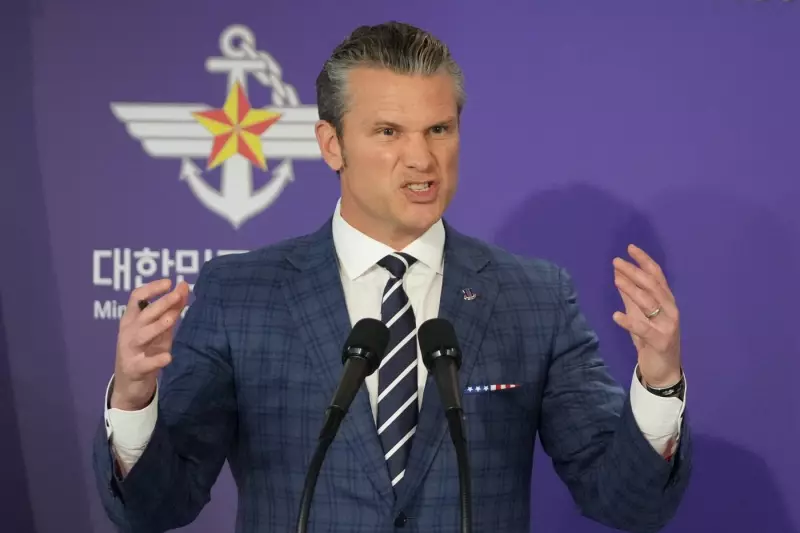
United States Defense Secretary Pete Hegseth has called for a significant shift in how the Pentagon purchases military weapons, emphasizing the need for speed over cost considerations in acquisition processes.
New Procurement Philosophy
During a recent press conference in Seoul, South Korea, following the 57th Security Consultative Meeting, Hegseth articulated his vision for transforming defense acquisition. The defense secretary stressed that accelerating weapons procurement must become the Pentagon's top priority, even if it means accepting higher costs.
Hegseth's position marks a departure from traditional defense spending approaches that often emphasize cost-effectiveness and lengthy evaluation processes. The new philosophy recognizes that modern military readiness requires faster adaptation to emerging threats and technological advancements.
Strategic Implications
The proposed shift comes at a time when global security challenges demand rapid response capabilities. By prioritizing speed in weapons acquisition, the Pentagon aims to close capability gaps more quickly and maintain technological superiority against potential adversaries.
This approach could significantly impact how defense contractors operate, potentially streamlining development timelines and encouraging more innovative solutions. The emphasis on rapid procurement aligns with evolving military doctrines that value agility and responsiveness in addressing contemporary security threats.
Global Context and Timing
Hegseth's announcement during his South Korea visit underscores the international dimensions of defense modernization. The timing suggests coordinated efforts with allies to enhance collective security capabilities through more efficient weapons development and deployment.
The defense secretary's stance reflects growing concerns about maintaining military advantage in an increasingly complex global security environment. By expediting acquisition processes, the Pentagon hopes to field advanced systems before potential adversaries can develop effective countermeasures.
This procurement strategy overhaul represents one of the most significant potential changes to defense spending practices in recent years, with implications for military readiness, budget allocation, and industrial base operations.





